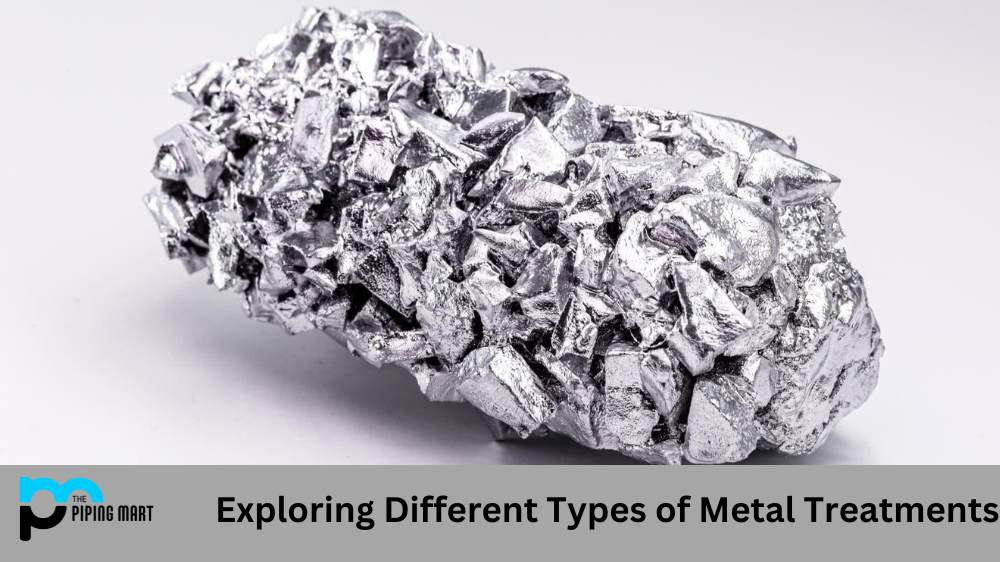Nickel is one of the most valuable and widely used metals. This durable metal is used in various products, including electronics, batteries, and building materials. However, most people are unaware that nickel is a non-renewable resource that needs to be recycled to reduce its environmental impact. Recycling nickel can help preserve the world’s finite resources and reduce greenhouse gas emissions. This blog post will discuss how to recycle nickel and help save the environment.
Importance of Recycling Nickel
Nickel is essential in many industrial applications and consumer products. However, the extraction of nickel from mines is energy-intensive and damaging to the environment. On the other hand, recycling nickel reduces the environmental impact of mining. It also reduces waste and saves energy. Recycling nickel can save up to 70% of energy compared to mining and producing new nickel.
How to Recycle Nickel
The Recycling Process for nickel-containing materials is more complicated than for other metals like aluminium or copper. Nickel can be recycled from various products like batteries, stainless steel, and electronics. To recycle nickel products, they must first be separated into different groups. Once the nickel sources have been sorted, it undergoes a process that involves melting, refining, and purifying the metal. These products are then returned to companies to be transformed or processed for reuse.
Method of Recycling Nickel
Collection
The recycling process begins with the collection of nickel-containing materials. These materials can come from various sources, including industrial waste, consumer products, and construction debris. Once collected, the nickel-containing materials are transported to a recycling facility.
Sorting
At the recycling facility, the nickel-containing materials are sorted into different categories. The most common recycled nickel-containing materials are stainless steel, nickel plating, and nickel alloys. Once the materials are sorted, they are ready for further processing.
Melting
The next step in the recycling process is melting. The sorted nickel-containing materials are placed in a furnace and heated to extremely high temperatures until they liquefy. Once liquid, impurities such as carbon and sulfur are removed from the melted material.
Refining
After the impurities have been removed, the melted material is poured into moulds called ingots. Once cooled and solidified, the ingots are transported to a refinery, which is further processed to create pure nickel.
Manufacturing
The final step in the recycling process is manufacturing. The pure nickel from the refinery is used to create new products such as coins, jewellery, and batteries.
Benefits of Recycling Nickel
Recycling Nickel, as we mentioned earlier, saves energy and reduces waste. Moreover, it provides a source of valuable metal for producing new products. Recycling nickel can help preserve the world’s finite resources and prevent environmental damage. Recycling and reusing nickel materials can reduce our carbon footprint and turn harmful waste into valuable resources.
Environmental impact
If nickel is not recycled, it can cause significant environmental damage. It contaminates the soil and water table, resulting in harmful human and environmental problems. Recycling nickel can significantly reduce greenhouse gas emissions and other chemicals released during the mining process. By opting for recycling, we reduce emissions linked to producing new metals, such as carbon dioxide and methane. Therefore, nickel recycling should be prioritized to minimize its environmental impact.
Conclusion
Nickel is one of the most important metals to recycle. Recycling nickel provides environmental and financial benefits, particularly energy cost reduction and prevention of environmental damage. The recycling process for nickel should be a high priority so that the world’s finite resources are preserved for future generations. Therefore, the goal should be to reduce the amount of nickel waste and minerals that enter landfills by efficiently managing the recycling process. We can promote a circular economy and create a sustainable future with our active participation. Recycling is the only responsible and sustainable way to manage and care for our planet’s natural resources.

Pipingmart is a B2B portal that specializes in metal, industrial and piping items. Additionally, we share the latest information and information about materials, products and various types of grades to assist businesses that are involved in this business.




